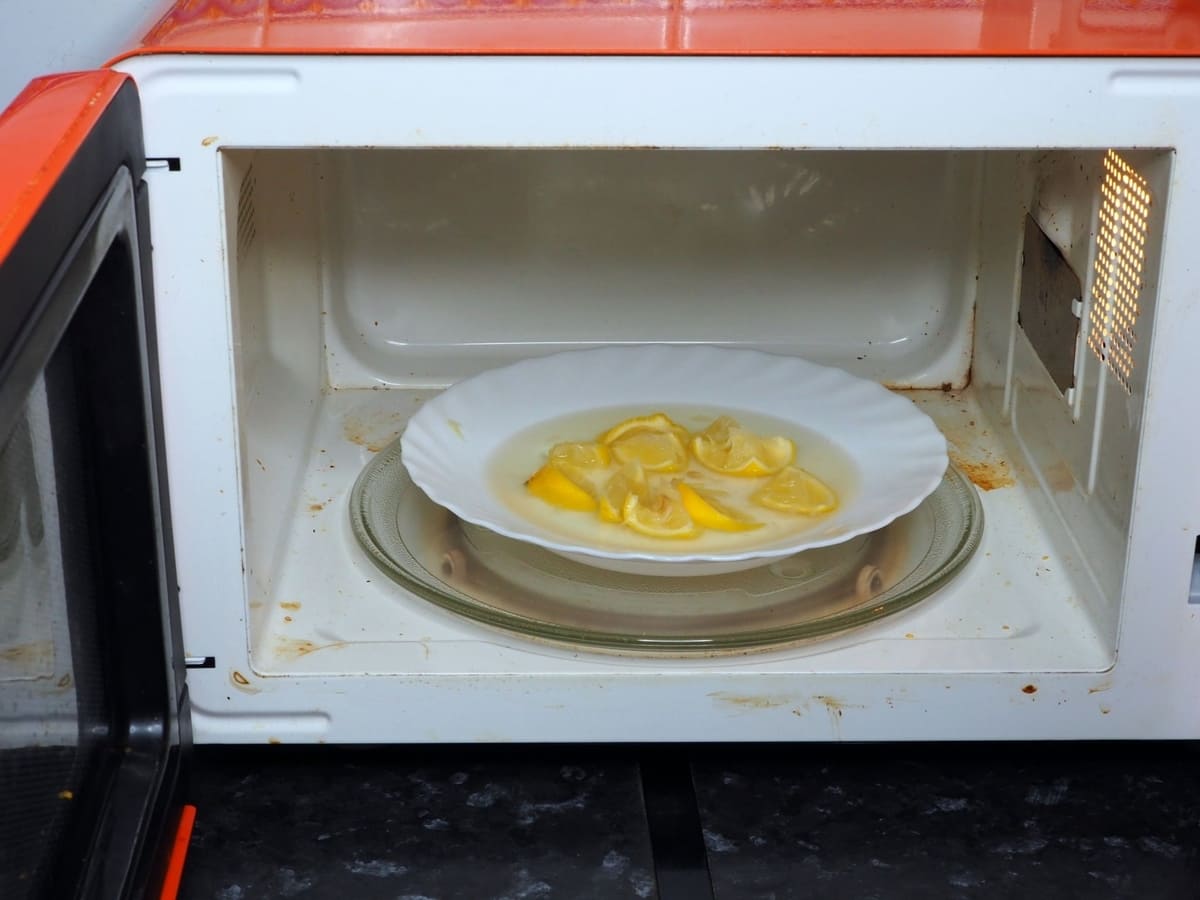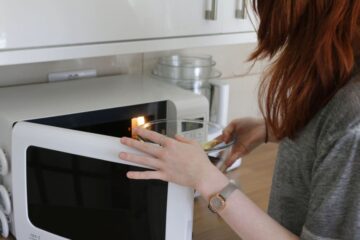When it comes to convenience, plastic plates have become a go-to choice for many households. However, with the increasing concern over the safety of microwaving plastic, many people are left wondering: can you put plastic plates in the microwave? In this article, we will explore the properties of plastic plates, how microwaves work, the dangers of microwaving plastic plates, safe materials for microwave use, and alternatives to plastic plates.
Understanding Plastic Plates
What are Plastic Plates?
Plastic plates are dishware made from plastic materials, usually designed to be disposable or reusable. They are a popular choice for outdoor events, picnics, and casual dining due to their lightweight and affordable nature. Plastic plates come in a variety of shapes, sizes, and colors, and they can be made from different types of plastic.
Types of Plastic Plates:
Plastic plates come in different varieties such as melamine, polycarbonate, and polypropylene. While they may look similar, each type of plastic plate has distinct properties that determine its safety for microwave use.
Properties of Plastic Plates:
The properties of plastic plates vary depending on the type of plastic they are made of. Understanding the properties can help determine the safety of microwaving plastic plates.
Advantages and Disadvantages of Plastic Plates:
While plastic plates offer convenience and affordability, they come with their own set of drawbacks. Knowing the advantages and disadvantages can help make informed decisions about the use of plastic plates.
Alternatives to Plastic Plates:
There are alternatives to plastic plates that are safer and more eco-friendly.
Microwave and How It Works?
- Definition of Microwave: Microwave is a type of electromagnetic radiation that is used for cooking and heating food.
- How Microwaves Work: Microwaves work by producing high-frequency electromagnetic radiation that causes water molecules to vibrate, generating heat that cooks the food.
- Microwave Radiation and Plastic Plates: The radiation produced by microwaves can interact with plastic plates, causing them to melt, warp, and release harmful chemicals into the food.
- Safety Concerns of Microwaving Plastic: Microwaving plastic plates can cause health hazards and risks to both humans and the environment.
Microwaving Plastic Plates
Can You Put Plastic Plates in the Microwave?
Not all plastic plates are safe for use in the microwave. It is essential to check the label or packaging to determine whether they are microwave safe.
Factors to Consider Before Microwaving Plastic Plates:
There are certain factors to consider before microwaving plastic plates. These include the type of plastic, the temperature of the food, and the duration of cooking.
Dangers of Microwaving Plastic Plates:
Microwaving plastic plates can release harmful chemicals and cause the plastic to melt or warp, affecting the safety of the food and the microwave.
How Microwaving Affects Plastic Plates:
Microwaving can change the properties of plastic plates, causing them to become brittle, discolor, or develop cracks.
Materials that are Safe for Microwave
- Materials that are Safe for Microwave: Certain materials are safe for use in the microwave, including glass, ceramic, and some plastics.
- Types of Plates that are Safe for Microwave: Plates made of glass or ceramic are the safest options for use in the microwave.
- Why Some Materials are Safe for Microwave: The properties of safe materials are such that they do not interact with the microwaves or release harmful chemicals into the food.
Risks of Microwaving Plastic Plates
- Risks of Microwaving Plastic Plates: Microwaving plastic plates can lead to potential harm, such as chemical exposure and environmental risks.
- Potential Harm of Microwaving Plastic Plates: Exposure to harmful chemicals in plastic can lead to long-term health effects such as cancer and infertility.
- Health Hazards Associated with Microwaving Plastic Plates: Microwaving plastic plates can cause health hazards such as hormone disruption and damage to the nervous system.
How to Reduce the Risk of Microwaving Plastic Plates?
There are several precautions you can take to minimize the risks of microwaving plastic plates. Here are some tips:
- Use only microwave-safe plastics: Look for plastic plates that are labeled as microwave-safe. Avoid using any plastic plates that do not have this label.
- Check for damage: Inspect your plastic plates before microwaving them. Any cracks, warping, or discoloration could indicate that the plate is damaged and not safe to use in the microwave.
- Avoid microwaving fatty or oily foods: Fatty or oily foods can get extremely hot in the microwave, which can cause the plastic to melt or leach harmful chemicals.
- Use microwave-safe covers: Use microwave-safe covers to cover your plastic plates when microwaving. This will help prevent any hot food from coming into direct contact with the plate and also keep the moisture in the food.
- Let the food cool down: Allow the food to cool down before putting it in the plastic plate. This will prevent the plate from getting too hot, which can lead to melting or warping.
- Use glass or ceramic plates: Consider using glass or ceramic plates instead of plastic. These materials are generally considered safe for microwaving and do not leach harmful chemicals.
- Opt for reusable plates: If you must use plastic plates, consider using reusable plates instead of disposable ones. Reusable plates are typically made from higher-quality materials and are less likely to leach harmful chemicals into your food.
How to Test If Plastic Plates are Microwave Safe?
It’s essential to test your plastic plates before microwaving them to ensure they are safe to use. Here are the steps to follow:
- Fill a microwave-safe cup with water.
- Place the cup on the plastic plate you want to test.
- Microwave on high for one minute.
- Carefully remove the plate from the microwave and feel for any hot spots.
If the plate is cool to the touch and there are no hot spots, it is likely safe to use in the microwave. However, if the plate is hot or has any hot spots, do not use it in the microwave.
What to Do If Plastic Plates are Not Microwave Safe:
If you find that your plastic plates are not safe for microwaving, consider using an alternative. Glass, ceramic, and even paper plates are all safe for microwaving and do not leach harmful chemicals.
Other Ways to Test Microwave Safety:
Aside from the water test, there are other ways to test if your plates are safe for the microwave. For example, you can look for a microwave-safe label on the plate or check the manufacturer’s instructions. Additionally, you can test the plate with a small amount of food for a short period to see how it reacts.
Alternatives to Plastic Plates
If you’re looking for alternatives to plastic plates, there are many options available. Here are some ideas:
- Eco-friendly alternatives: Consider using eco-friendly plates made from materials like bamboo, palm leaves, or sugarcane. These materials are biodegradable and environmentally friendly.
- Disposable and reusable alternatives: Look for disposable or reusable plates made from materials like glass, ceramic, or metal. These materials are generally considered safe for microwaving and do not leach harmful chemicals.
- Cost-effective alternatives: If you’re on a budget, consider using paper plates or even reusable plastic plates. Just make sure to look for microwave-safe options.
Conclusion
Microwaving plastic plates can be a convenient way to heat up food quickly. However, it’s essential to understand the risks and take the necessary precautions to ensure your safety. Remember to only use microwave-safe plastics, avoid using scratched or damaged plastic plates, and follow the manufacturer’s instructions for microwaving. If you’re unsure about a plastic plate’s microwave safety, it’s always best to err on the side of caution and use an alternative material. By following these tips, you can enjoy the convenience of microwaving food without compromising your health and safety.



